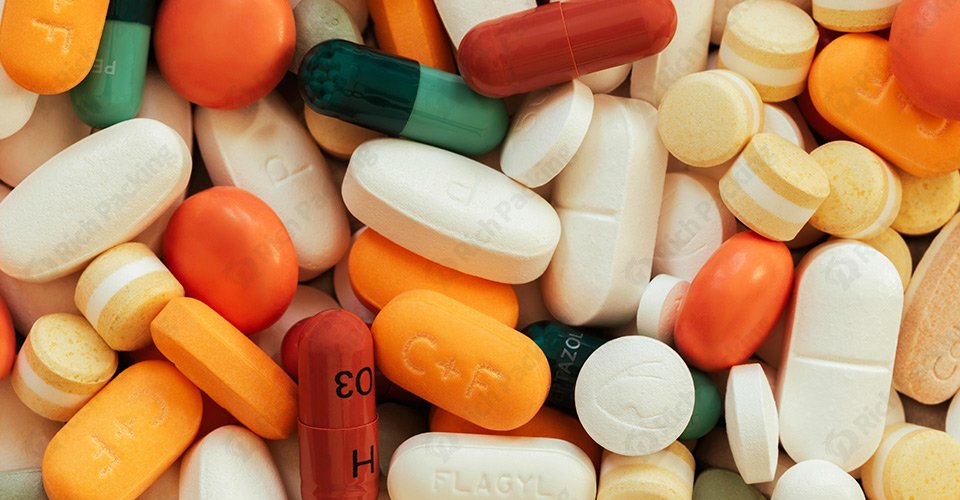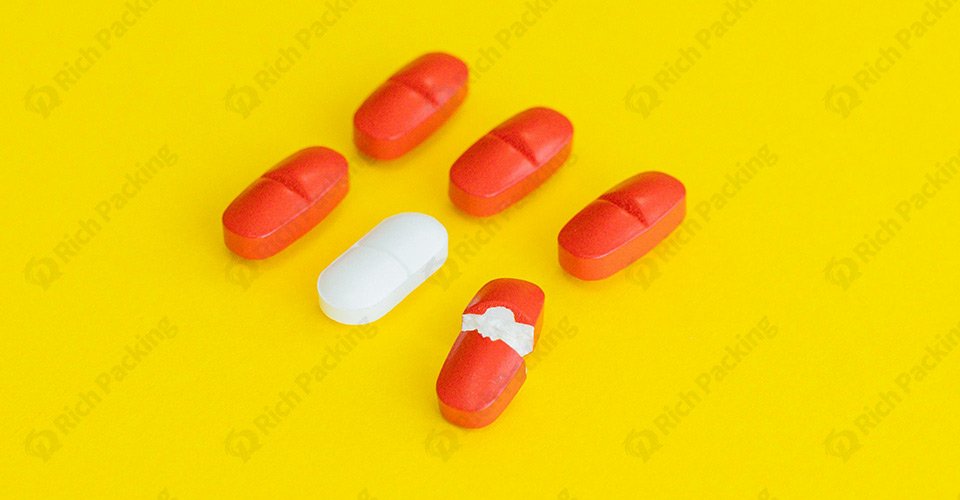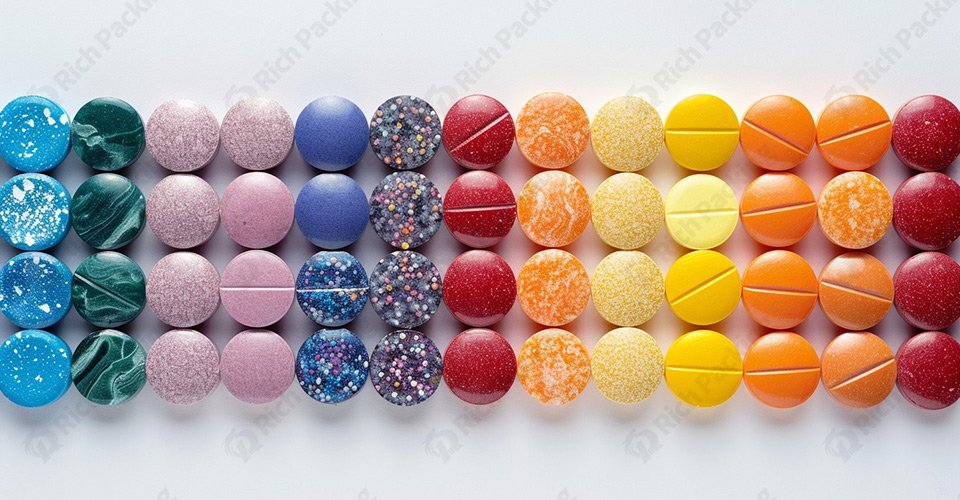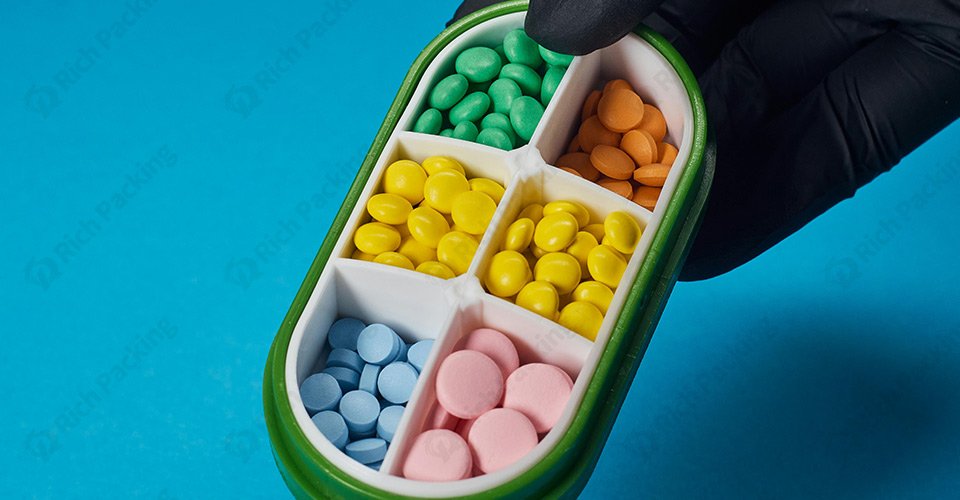Nell'industria farmaceutica, il rivestimento è un passaggio cruciale produzione di compresse e capsule La scelta tra rivestimento in pellicola E rivestimento di zucchero può avere un impatto significativo sulla aspetto , durata di conservazione , mascheramento del gusto e nel complesso efficacia del tuo prodotto. Quando valuti quale metodo utilizzare per i tuoi farmaci, è importante comprendere le principali differenze e come queste influiscono sul processo di produzione, sui costi e sull'attrattiva per i consumatori.

Che cosa è il rivestimento filmico?
Rivestimento in pellicola prevede l'applicazione di uno strato sottile e protettivo fatto di materiali a base di polimeri in compresse o capsule. È una tecnica più moderna, che offre diversi vantaggi, tra cui migliore protezione per i principi attivi e un più liscio aspetto delle tavolette.
I materiali comuni per il rivestimento della pellicola includono idrossipropilmetilcellulosa (HPMC) , etilcellulosa e altri polimeri solubili in acqua Questi materiali forniscono una barriera sottile ma resistente che protegge il contenuto della compressa da umidità, luce e aria, fattori che possono degradare il farmaco nel tempo.
Il processo prevede in genere la spruzzatura di un sottile strato di soluzione polimerica sulla superficie della compressa mentre questa ruota in un tamburo o in una padella. Man mano che il materiale di rivestimento si asciuga, forma un strato solido e liscio sulla tavoletta. Questo processo è efficiente e può essere facilmente adattato alla produzione su larga scala.
Il rivestimento in pellicola è spesso preferito per compresse farmaceutiche moderne , in particolare quelli che richiedono rilascio controllato o quelli progettati per mascherare i sapori amari. È ampiamente utilizzato per a rilascio prolungato , a rilascio ritardato , E compresse gastroresistenti .

Rivestimento di zucchero è una tecnica più tradizionale che prevede l'applicazione sciroppo di zucchero attorno a una tavoletta in diversi strati fino a formare un guscio esterno spesso e dolce. È un metodo che esiste da anni, noto per la produzione lucido , lucido compresse che piacciono sia ai consumatori che agli operatori sanitari.
I principali materiali utilizzati nella glassatura dello zucchero includono sciroppo di zucchero , gelatina , amido e a volte cera Questi ingredienti vengono mescolati per creare un rivestimento protettivo dal sapore dolce.
Il rivestimento con zucchero richiede l'applicazione di più strati di sciroppo sulla compressa, ciascuno seguito da un processo di essiccazione. Le compresse vengono rivestite più volte per ottenere lo spessore e la finitura lucida desiderati. Sebbene questo processo si traduca in un prodotto finale dall'aspetto gradevole, è più dispendioso in termini di tempo e manodopera rispetto al rivestimento con pellicola.
La copertura di zucchero è tipicamente utilizzata in farmaci per bambini , vitamine , E prodotti da banco , in particolare quelli che beneficiano dell' sapore dolce mascheramento per una migliore accettazione da parte dei consumatori.

Per scegliere quella più adatta al tuo prodotto è essenziale comprendere le differenze tra queste due tecniche di rivestimento.
La prima grande differenza è la spessore del rivestimento. Il rivestimento della pellicola crea un strato sottile e uniforme , mentre la copertura di zucchero produce un più spesso , Di più più ingombrante tavoletta.
Pro e contro dello spessore
Le compresse rivestite con film sono più
compatto
e più facili da deglutire grazie alle loro dimensioni più piccole. Le compresse rivestite di zucchero, d'altra parte, sono spesso più voluminose e possono dare una sensazione
più pesante
.
IL fascino estetico del tuo prodotto è fondamentale per la soddisfazione del consumatore. Le compresse rivestite con film hanno in genere un liscio , aspetto professionale, che è preferito per prodotti farmaceutici moderni D'altra parte, le compresse rivestite di zucchero hanno un lucido, brillante finire, spesso con un colorato look che può attrarre i consumatori più giovani o coloro che cercano un look più aspetto tradizionale .
Percezione del consumatore
In alcuni mercati, le compresse rivestite di zucchero sono considerate più
tradizionale
e può attrarre i clienti che cercano prodotti familiari. Tuttavia, per
marchi premium
o prodotti destinati al
attento alla salute
, l'aspetto pulito ed elegante delle compresse rivestite con film potrebbe essere più desiderabile.
Il rivestimento della pellicola offre una qualità superiore protezione contro umidità , leggero , E aria , tutti fattori che possono degradare i principi attivi farmaceutici. Grazie al suo strato sottile e solido, il rivestimento filmico aiuta a preservare l'integrità del farmaco.
La copertura di zucchero, pur offrendo protezione, è più incline a scheggiatura O screpolatura a causa dei molteplici strati di sciroppo. È anche più sensibile ai fattori ambientali come umidità , che può causare la formazione di croste di zucchero appiccicoso O morbido .
Quando si tratta di velocità di produzione e costi, rivestimento in pellicola è il chiaro vincitore. Il processo è più efficiente e il tempo di asciugatura richiesto è molto più breve rispetto al rivestimento di zucchero. È possibile produrre compresse rivestite con film Più veloce e a un costo inferiore , rendendoli ideali per la produzione su larga scala.
La glassatura di zucchero, d'altra parte, è ad alta intensità di manodopera e richiede cicli di asciugatura multipli , che lo rende più dispendioso in termini di tempo E costoso .
Sia la pellicola che il rivestimento di zucchero hanno la capacità di mascherare i sapori sgradevoli , ma lo fanno in modi diversi. Il rivestimento della pellicola fornisce un barriera sottile che aiuta a mascherare l'amarezza, mentre il sapore dolce della copertura di zucchero viene spesso utilizzato per nascondere l'amarezza della droga stessa.
Idoneità per i farmaci pediatrici
La copertura di zucchero è particolarmente benefica per
medicinali per bambini
, poiché il sapore dolce rende le compresse più appetibili. Il rivestimento del film è efficace anche per
mascheramento del gusto
, ma non offre lo stesso sapore dolce immediato della glassa di zucchero.

La scelta del metodo di rivestimento corretto dipende da una serie di fattori, tra cui tipo di prodotto , focus sul mercato , E requisiti di produzione .
Tipo di prodotto e pubblico di destinazione: Se il tuo prodotto è rivolto ai bambini o ai consumatori che cercano un sapore dolce, rivestimento di zucchero potrebbe essere la scelta migliore. Tuttavia, se si producono farmaci che richiedono una consegna precisa o una lunga conservazione, rivestimento in pellicola è probabilmente l'opzione migliore.
Efficienza produttiva: Se hai bisogno velocità E efficienza dei costi , rivestimento in pellicola è la scelta più ovvia. Tuttavia, se il tuo prodotto richiede l'aspetto tradizionale o un mascheramento del sapore specifico che solo la glassatura con zucchero può offrire, la glassatura con zucchero potrebbe comunque essere la soluzione migliore.
Branding e attrattiva sul mercato: Considera cosa attrae di più il tuo target demografico. Compresse rivestite con film sono ideali per marchi premium E formulazioni avanzate , Mentre compresse rivestite di zucchero può fare appello a un mercato più ampio , soprattutto per i prodotti che hanno come target bambini .
Conclusione
Entrambi rivestimento in pellicola E rivestimento di zucchero offrono vantaggi unici e sono adatti a diversi tipi di prodotti farmaceutici. Il rivestimento in pellicola è generalmente preferito per la sua efficienza , rapporto costo-efficacia , E protezione , mentre la glassa di zucchero ha ancora un posto nel mercato grazie alla sua sapore dolce E appello in determinate categorie di prodotti.
Comprendendo i vantaggi e i limiti di entrambi i metodi, puoi prendere una decisione informata su quale tecnica di rivestimento sia più adatta ai tuoi prodotti farmaceutici e alle tue esigenze aziendali. Che tu stia puntando a produzione ad alta velocità O appeal per i consumatori la scelta del rivestimento avrà un ruolo significativo nel successo del tuo prodotto.